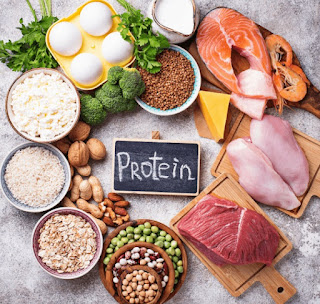Achieving weight loss goals involves more than just cutting calories; it requires a balanced diet that includes all the essential nutrients your body needs to function optimally. Protein foods for weight loss play a crucial role in this process, helping to build and repair tissues, maintain muscle mass, and keep you feeling full. However, combining protein with other vital nutrients such as fiber, healthy fats, and vitamins ensures a well-rounded approach to weight management. Here’s how to build a balanced diet that effectively combines protein foods with other nutrients to promote weight loss.
The Role of Protein in Weight Loss
Protein is an essential macronutrient that supports various bodily functions. For weight loss, its primary benefits include:
Satiety: Protein increases feelings of fullness and reduces appetite, which can lead to a lower overall calorie intake.
Muscle Maintenance: During weight loss, protein helps preserve lean muscle mass, which is crucial for maintaining a healthy metabolism.
Thermogenic Effect: Digesting protein requires more energy, thus burning more calories compared to fats and carbohydrates.
While protein is vital, it’s important to balance it with other nutrients to create a diet that supports overall health and sustainable weight loss.
Combining Protein with Fiber
Fiber is another crucial component of a weight loss diet. It aids digestion, helps regulate blood sugar levels, and contributes to feelings of fullness. Combining protein foods with high-fiber foods can enhance satiety and improve digestive health. Here are some ways to pair them:
Legumes: Beans, lentils, and chickpeas are excellent sources of both protein and fiber. They can be added to salads, soups, and stews.
Whole Grains: Foods like quinoa, barley, and brown rice provide fiber and pair well with protein sources such as chicken, fish, or tofu.
Vegetables: Leafy greens, broccoli, and Brussels sprouts are high in fiber and can be combined with lean proteins like grilled chicken or fish.
Integrating Healthy Fats
Healthy fats are essential for absorbing fat-soluble vitamins, protecting your organs, and providing energy. Including sources of healthy fats in your diet can also help keep you full and satisfied. Here’s how to combine them with protein foods for weight loss:
Nuts and Seeds: Almonds, chia seeds, and flaxseeds provide healthy fats and protein. They can be added to Greek yogurt or oatmeal for a nutrient-dense breakfast or snack.
Avocado: Rich in monounsaturated fats, avocado can be paired with eggs, added to salads, or spread on whole-grain toast with a protein topping.
Fatty Fish: Salmon, mackerel, and sardines are rich in omega-3 fatty acids and high-quality protein. They make an excellent main course when served with a side of fiber-rich vegetables.
Incorporating Vitamins and Minerals
Micronutrients like vitamins and minerals are vital for metabolic processes, immune function, and overall health. A balanced diet should include a variety of fruits and vegetables to ensure you’re getting these essential nutrients:
Vitamin C: Found in citrus fruits, bell peppers, and strawberries, vitamin C can enhance the absorption of iron from plant-based proteins.
Calcium: Important for bone health, calcium is abundant in dairy products like low-fat yogurt and cheese, which also provide protein.
Iron: Crucial for oxygen transport in the blood, iron is found in red meat, poultry, and leafy green vegetables. Pairing these with vitamin C-rich foods can enhance iron absorption.
Meal Planning for a Balanced Diet
Creating balanced meals involves combining protein foods with fiber-rich carbohydrates and healthy fats. Here are some meal ideas to get you started:
Breakfast: Greek yogurt topped with chia seeds, sliced almonds, and berries.
Lunch: Grilled chicken salad with mixed greens, avocado, cherry tomatoes, and a sprinkle of quinoa.
Dinner: Baked salmon with a side of roasted Brussels sprouts and sweet potatoes.
Snacks: Apple slices with peanut butter, or carrot sticks with hummus.
Hydration and Physical Activity
Don’t forget the importance of staying hydrated and incorporating physical activity into your weight loss plan. Water aids in digestion and helps control appetite, while regular exercise supports muscle maintenance and overall health.
Conclusion
Building a balanced diet that combines protein foods for weight loss with other essential nutrients is key to achieving sustainable results. By integrating fiber, healthy fats, vitamins, and minerals into your meals, you can create a nutritious and satisfying diet that supports your weight loss journey. Remember, the goal is not just to lose weight but to maintain a healthy lifestyle that promotes overall well-being.

Comments
Post a Comment